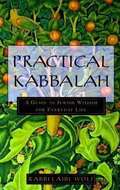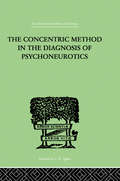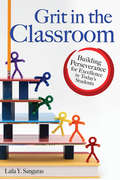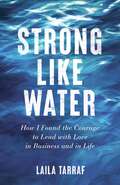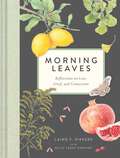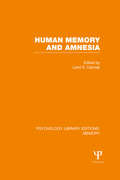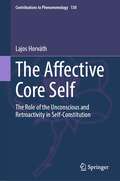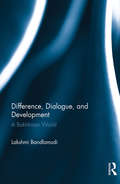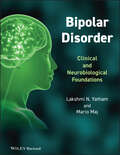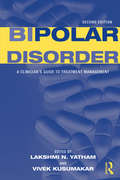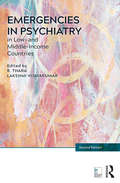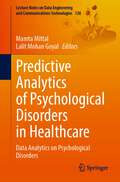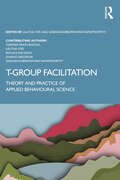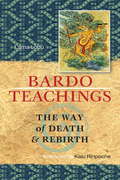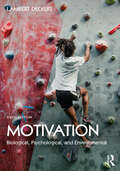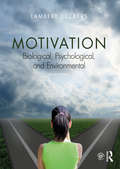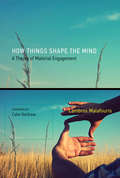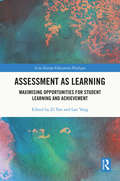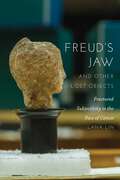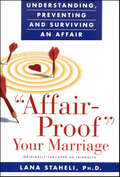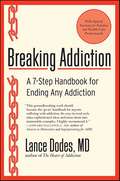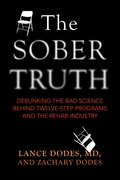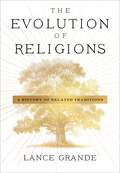- Table View
- List View
Practical Kabbalah: A Guide to Jewish Wisdom for Everyday Life
by Laibl WolfKabbalah is an ancient Jewish wisdom that explains the laws of spiritual energy. Up until very recently the Kabbalah was reserved for the elite, those who only after years of scholarship and practice were allowed to enter this mystical realm. However, one doesn't need to devote one's life to intense study to reap the rich rewards of the Kabbalah. With just a basic understanding of a few key concepts, our lives can be enriched immensely. We can then begin to fulfill our deepest dreams and reach our most important goals, becoming the people we long to become. By learning to understand the Sefirot--the ten spiritual properties that flow from the cosmic source into our heart--we can connect to the universe and profoundly transform our experience of daily life. For example, Hessed, or "loving-kindness," represents the desire to be generous, while Gevurah is the desire to focus intently or withhold. These properties must be balanced in order for harmony and well-being to occur. Rabbi Laibl Wolf shows how to maintain that balance and enjoy a healthy and productive life by using simple meditation and creative visualization techniques to grasp the spiritual nature of our life. Practical Kabbalah draws upon ancient wisdom but offers a modern interpretation and easy-to-understand techniques for delving deeper into our selves and our world and for reaping the bounteous gifts that were always meant for us.From the Trade Paperback edition.
The Concentric Method In The Diagnosis Of Psychoneurotics
by Laignel-Lavastine, MFirst published in 1999. Routledge is an imprint of Taylor & Francis, an informa company.
Grit in the Classroom: Building Perseverance for Excellence in Today's Students
by Laila SangurasThe combination of sustained hard work and resiliency, grit is the difference between those who give up and those who don't. Grit in the Classroom: Building Perseverance for Excellence in Today's Students assists educators in creating a learning environment that fosters grit development for all students, regardless of ability. Each chapter includes stories to illustrate the research and ideas presented and ends with discussion questions that can be used to continue the conversation. In an era of talent development and the pursuit of excellence, learners must be equipped with the perseverance that is essential to reaching high levels of success. This book provides a rationale for teaching grit in the classroom with the goal of propelling this topic into discussions of building passion and talent in today's students.
Strong Like Water: How I Found the Courage to Lead with Love in Business and in Life
by Laila TarrafLaila Tarraf was the Chief People Officer for Peet&’s Coffee and Tea, the iconic Berkeley coffee roaster that launched the craft coffee movement in America, but she had a secret: she was failing in the most important relationships in her life. Yes, she was a strong and effective business leader, the successful daughter of immigrants, and the mother of a toddler; but she was also disconnected from her own feelings and had little patience for the feelings of others. All that changed when life handed her a trifecta of losses: her husband died of an accidental drug overdose, and her parents' deaths followed in quick succession. Laila had spent her life leading from the head, convinced that any display of vulnerability would make her soft. What she didn&’t expect was that soft would turn out to be strong. As she reconnected to her heart, one painful step at a time, something remarkable happened: she became a better leader, a better mother, and a better person. Her heart turned out to be the true source of her power, at home and at work. This is a book about healing, about waking up, about learning who you are—who you really, truly are at the core—and reclaiming and embracing all the pieces of yourself you long ago abandoned in the name of survival. Women longing for balance will discover a path to infusing our leadership and relationships with love, compassion, and authenticity.
Morning Leaves: Reflections on Loss, Grief, and Connection
by Laing F. RikkersSteeped in beautiful art and verse that invites reflection, Morning Leaves is the perfect gift book or self-purchase for those grieving the loss of a loved one.In the wake of the untimely death of the author's younger sister and isolated by the pandemic, Rikkers produced Morning Leaves, a book of vulnerable, evocative, and ultimately hopeful poems. She introduces her story and explains how counseling, the artistic process, and nature helped her through the healing process. Her poems, paired with Kelly Leahy Radding's stunningly realistic botanical paintings, metaphorically describe the range of emotions she passes through while grieving. Rikkers seizes the opportunity to be attentive to who she is and, more importantly, who she wants to be, leaving space for the reader to do the same. Her writing is soulful, open, and accessible and the artwork is exquisite. Ultimately, readers are invited to reflect on themselves as they address the grief and loss they have experienced in their own lives.
Human Memory and Amnesia (Psychology Library Editions: Memory)
by Laird S. CermakOriginally published in 1982, this book brings together two areas of research previously studied in parallel, with little interaction (particularly in the US): normal memory processing and the amnesic syndrome. When trying to document the relationship between the two it became apparent that there was much crossover and duplication of effort in a number of areas: whether long-term memory and short-term memory truly represent independent storage systems, or are simply points on a continuum; trying to determine the primary locus of variables influencing the rate at which information is lost during retention; whether episodic memory and semantic memory represent two different storage systems, or are simply artifacts produced by different kinds of query to a single memory system and finally, whether visual and verbal memory are independent. It was written, following a meeting in 1979, by a small group of investigators, brought together to explore this commonality and to share data and theory, thus beginning the promise of a bright future of interdisciplinary interaction in memory research.
The Affective Core Self: The Role of the Unconscious and Retroactivity in Self-Constitution (Contributions to Phenomenology #130)
by Lajos HorváthThis book extends the contemporary concept of the minimal self by introducing the affective core self. The overall aim is to integrate certain psychoanalytical ideas into the phenomenological investigation of passivity and reformulate the idea of the phenomenological unconscious. This volume contributes to the multidimensional analysis of the self by positioning the affective core self between the layers of the more minimal and the less minimal self. It underscores the importance of the unconscious in the constitution of the affective core self by providing the comparative analysis of the phenomenological and the psychoanalytical unconscious.Furthermore, comparisons are drawn between Freud’s conception of the afterwardsness of trauma and the phenomenological notion of retroactive sense-constitution. The book concludes that retroactive sense-making is a double-sided phenomenon and differentiates between implicit-bodily and conscious-narrative retroactive sense-constitution. In order to bolster the idea of implicit-bodily sense-constitution the volume also examines and utilizes contemporary insights on the nature of body memory. The conclusion claims that the affective core self is constituted in time by means of the underlying processes of the two-sided retroactive sense-constitution. This text appeals to students and researchers working in phenomenology and philosophy of mind.
Difference, Dialogue, and Development: A Bakhtinian World
by Lakshmi BandlamudiDifference, Dialogue, and Development is an in-depth exploration of the collected works of Mikhail Bakhtin to find relevance of key concepts of dialogism for understanding various aspects of human development. Taking the reality of differences in the world as a given, Bandlamudi argues that such a reality necessitates dialogue, and actively responding to that necessity leads to development. The varied works of Bakhtin that span several decades passing through the most tumultuous period in Russian history, are brought under one banner of three D’s – Difference, Dialogue and Development – and the composite features of the three D’s emerge as leitmotifs in every chapter.
Bipolar Disorder
by Mario Maj Lakshmi N. YathamBipolar disorder is the most complex psychiatric disorder with different types of mood episodes, subtypes, varied course, and significant co-morbidity. Not surprisingly, this complexity poses unique challenges to clinicians for optimal management of those with bipolar disorder.There has been an explosion of research into the causes and treatment of this condition over the past two decades. It is a daunting task for a practising clinician to make sense of this research and to remain up to date with progress in the understanding of the neurobiology and treatment of bipolar disorder. This book synthesizes and translates the vast array of research knowledge into information that is clinically relevant and meaningful for a clinician.The book provides a comprehensive, yet focused, reference work on bipolar disorder for both trainees and practising psychiatrists. The two editors are leaders in the field who have published extensively on bipolar disorder. They have assembled a team of experts from around the world: in many instances, chapters are co-authored by people from different continents, bringing a truly international perspective to this important topic. The book covers the basic science of the pathology underlying bipolar disorder but addresses the clinical aspects of the disease throughout.The book comprises four sections:Descriptive Aspects--issues ranging from how the concept of bipolar disorder has evolved over the years to new information about neurocognitive impairment, creativity and economic productivity, and to discussion of the deliberations of the DSM-V committee on changes in diagnostic categories and criteria.Biology--the contribution of genes to this disorder, changes in circadian rhythms, what we know about brain changes and the role of oxidative stress.Biological Treatment and Psychosocial Treatment-- all the latest information about pharmacological and psychological treatments and the optimal management of this condition.If you want to provide state-of-the-art care to your bipolar patients, be sure to consult this authoritative reference.
Bipolar Disorder: A Clinician's Guide to Treatment Management (Oxford Psychiatry Library)
by Lakshmi N. Yatham Vivek KusumakarFirst published in 2009. Routledge is an imprint of Taylor & Francis, an informa company.
Emergencies in Psychiatry in Low- and Middle-income Countries
by Lakshmi Vijayakumar R. TharaThere is a need to not only understand psychiatric emergencies in low- and middle-income countries but also to formulate logical and acceptable forms of intervention. This book gives the reader an overview of the kinds of psychiatric emergencies that can occur and the strategies employed to manage these in developing countries. The book covers anxiety disorders, psychotic disorders, personality disorders, substance abuse disorders, grief, suicidal behaviour and psychiatric emergencies following disasters. It also deals with special population groups, such as women, children and the elderly, who require different modes of intervention.
Predictive Analytics of Psychological Disorders in Healthcare: Data Analytics on Psychological Disorders (Lecture Notes on Data Engineering and Communications Technologies #128)
by Mamta Mittal Lalit Mohan GoyalThis book discusses an interdisciplinary field which combines two major domains: healthcare and data analytics. It presents research studies by experts helping to fight discontent, distress, anxiety and unrealized potential by using mathematical models, machine learning, artificial intelligence, etc. and take preventive measures beforehand. Psychological disorders and biological abnormalities are significantly related with the applications of cognitive illnesses which has increased significantly in contemporary years and needs rapid investigation. The research content of this book is helpful for psychological undergraduates, health workers and their trainees, therapists, medical psychologists, and nurses.
T-Group Facilitation: Theory and Practice of Applied Behavioural Science
by Lalitha Iyer Sharad Sakorkar Sankarasubramanyan Ramamoorthy Tejinder Singh Bhogal Renuka Raj SinghThis book offers the core conceptual base for the practice of T-Group facilitation. Drawing from the fields of psychology, social psychology, sociology, diversity studies and Indian philosophical thoughts, this book is a great resource for enhancing the practice of T-Group facilitation, for both budding and established facilitators. It covers a wide range of theories on human development, self-awareness, interpersonal interactions, groups and change. Individual and group identities, diversity, inclusion and social hierarchies are explored in detail here. The authors offer a model of T-Group facilitation based on 50 years of experience within the Indian Society for Applied Behavioural Science (ISABS). This model is useful not only for fellow practitioners of T-Groups but also for anyone engaged in facilitating groups, organizations and communities globally. This book helps one to reflect, develop and sharpen one’s competencies, values and ethics in this field. The chapters are embedded with activities, quizzes, case studies and exercises to facilitate a deeper understanding of the various elements used in the book. This book will be of interest to students, teachers and practitioners of psychology, social psychology, management studies and organizational development. It will also be useful for T-Group facilitators, facilitators of experiential groups and related fields.
Eminent Economists II
by Michael Szenberg Lall B. RamrattanThe sequel to Eminent Economists, this book presents the ideas of some of the most outstanding economists of the past half century. The contributors, representing divergent points of the ideological compass, present their life philosophies and reflect on their conceptions of human nature, society, justice, and the source of creative impulse. These self-portraits reveal details of the economists' personal and professional lives that capture the significance of the total person. The essays represent streams of thought that lead to the vast ocean of economics, where gems of the discipline lie, and the volume will appeal to a wide array of readers, including professional economists, students, and laypersons who seek a window into the heart of this complex field. The contributors include Alan S. Blinder, Clair Brown, John Y. Campbell, Vincent P. Crawford, Paul Davidson, Angus Deaton, Harold Demsetz, Peter Diamond, Avinash Dixit, Barry Eichengreen, Jeffrey Frankel, Richard B. Freeman, Benjamin M. Friedman, John Hull, Michael D. Intriligator, Peter B. Kenen, Anne O. Krueger, Helen F. Ladd, Harry M. Markowitz, Frederic S. Mishkin, Elinor Ostrom, Anwar Shaikh, Jeremy J. Siegel, Vernon L. Smith, Robert M. Stern, Myra H. Strober, Hal R. Varian, Michelle J. White, and Marina V. N. Whitman.
Physical Exercise Interventions for Mental Health
by Michelle Riba Lam, Linda C. W. and Riba, Michelle Lam, Linda C. W.Exercise is well known to be beneficial to physical health; however, increasing research indicates that physical exercise is also beneficial to brain health and may alleviate symptoms of mental disorders. This book, written by international experts, describes and explores the theory and practice of exercise intervention for different mental disorders across the life span. Drawing on evidence from basic neuroscience research, and enriched with findings from the latest clinical trials, the work provides clear descriptions of current practice and highlights ways to translate this knowledge into pragmatic advice for use in daily practice. The chapters cover a broad range of conditions including neurodevelopmental disorders, depression, anxiety, psychosis and late life neurocognitive disorders. This book is for mental health clinicians including psychiatrists, psychologists, social workers, nurses, as well as internists, paediatricians and geriatricians seeking a comprehensive and individualized approach to treatment.
Motivation: Biological, Psychological, and Environmental
by Lambert DeckersMotivation provides an accessible introduction to motivation and emotion, combining classic studies with current research and uses numerous real-world examples to engage the student and make, often difficult, theoretical concepts come to life. By understanding and applying the principles of motivation described in the text, students will not only discover insights into what motivates their own behavior but also how to instigate self-change through goal-setting. Throughout the book the author adopts an evolutionary approach to explore the effect of interpersonal relationships, food preferences, fear, music, and the emotions on motivation, at the same time considering how personality traits and psychological needs are essential for understanding why people are motivated by different things. The motivation of compulsive behavior from addictions, such as drugs, gambling, Internet gaming, and obsessive exercise is also considered, providing a truly comprehensive overview of biological, psychological, and environmental sources of motivation. The sixth edition has been thoroughly updated throughout and is accompanied by an instructor’s manual that contains multiple choice questions, essay questions with answers, websites related to motivation and emotion, power point slides, in-class activities, and discussion questions. It is an essential read for all students of motivation.
Motivation: Biological, Psychological, and Environmental (Mysearchlab Series 15% Off Ser.)
by Lambert DeckersThis textbook provides a complete overview of motivation and emotion, using an overarching organizational scheme of how biological, psychological, and environmental sources become motivation—the inducement of behavior, feelings, and cognition. It combines classic studies with current research and uses numerous real-world examples to engage the student and make often-difficult theoretical concepts come to life. By understanding and applying the principles of motivation described in the text, students will not only discover insights into what motivates their own behavior but also how to instigate self-change. Thoroughly revised and updated throughout, this fifth edition provides a major review of recent research, with over 225 new references, including expansion in the areas of goal motivation and emotion psychology. Other updated topics include new findings and interpretations on how evolution affects our preferences, how personality traits determine motivation, and how self-control depends on a cost/benefit analysis. The addition of individual chapter glossaries and an increased number of links to additional resources supplement student learning. This textbook is suitable as a primary text for courses on motivation. For additional resources, please consult the companion website at www.routledge.com/cw/deckers.
How Things Shape the Mind: A Theory of Material Engagement
by Lambros MalafourisAn account of the different ways in which things have become cognitive extensions of the human body, from prehistory to the present.An increasingly influential school of thought in cognitive science views the mind as embodied, extended, and distributed rather than brain-bound or “all in the head.” This shift in perspective raises important questions about the relationship between cognition and material culture, posing major challenges for philosophy, cognitive science, archaeology, and anthropology. In How Things Shape the Mind, Lambros Malafouris proposes a cross-disciplinary analytical framework for investigating the ways in which things have become cognitive extensions of the human body. Using a variety of examples and case studies, he considers how those ways might have changed from earliest prehistory to the present. Malafouris's Material Engagement Theory definitively adds materiality—the world of things, artifacts, and material signs—into the cognitive equation. His account not only questions conventional intuitions about the boundaries and location of the human mind but also suggests that we rethink classical archaeological assumptions about human cognitive evolution.
Assessment as Learning: Maximising Opportunities for Student Learning and Achievement (Asia-Europe Education Dialogue)
by Zi Yan Lan YangBased on a solid theoretical basis of assessment-as-learning and updated empirical evidences, this timely book significantly expands the existing scope of assessment-as-learning typically developed in Western contexts. This edited volume updates theoretical and empirical advances in assessment-as-learning in complex learning processes, brought together by an international panel of authors. The contributors provide a wide range of practical ways to harness the power of assessment-as-learning to make it work more effectively not only in the classroom, but also across other achievement-related situations (e.g. examinations, learning processes before and after classes). Assessment as Learning provides a deep contemporary insight into the field of formative assessment, and brings much-needed international perspectives to complement the current Western-focused research. This is a valuable contribution to the discussion, and provides useful insight for researchers in Education.
Freud's Jaw and Other Lost Objects: Fractured Subjectivity in the Face of Cancer
by Lana LinWhat does it mean to live with life-threatening illness? How does one respond to loss? Freud’s Jaw and Other Lost Objects attempts to answer these questions and, as such, illuminates the vulnerabilities of the human body and how human beings suffer harm. In particular, it examines how cancer disrupts feelings of bodily integrity and agency. Employing psychoanalytic theory and literary analysis, Lana Lin tracks three exemplary figures, psychoanalyst Sigmund Freud, poet Audre Lorde, and literary and queer theorist Eve Kosofsky Sedgwick. Freud’s sixteen-year ordeal with a prosthetic jaw, the result of oral cancer, demonstrates the powers and failures of prosthetic objects in warding off physical and psychic fragmentation. Lorde’s life writing reveals how losing a breast to cancer is experienced as yet another attack directed toward her racially and sexually vilified body. Sedgwick’s memoir and breast cancer advice column negotiate her morbidity by disseminating a public discourse of love and pedagogy. Lin concludes with an analysis of reparative efforts at the rival Freud Museums in London and Vienna. The disassembled Freudian archive, like the subjectivities-in-dissolution upon which the book focuses, shows how the labor of integration is tethered to persistent discontinuities.Freud’s Jaw asks what are the psychic effects of surviving in proximity to one’s mortality, and it suggests that violences stemming from social, cultural, and biological environments condition the burden of such injury. Drawing on psychoanalyst Melanie Klein’s concept of “reparation,” wherein constructive forces are harnessed to repair damage to internal psychic objects, Lin proposes that the prospect of imminent destruction paradoxically incites creativity. The afflicted are obliged to devise means to reinstate, at least temporarily, their destabilized physical and psychic unity through creative, reparative projects of love and writing.
Affair-Proof Your Marriage: Understanding, Preventing and Surviving an Affair
by Lana StaheliThis singular guide presents the straightforward facts on affairs, as well as advice to affairees and spouses on how to cope with them.Since 60% of marriages are affected by affairs, you should know the facts:Women under 30 are as likely as men to have an affair.Love affairs are different from sex affairs.Most affairs last between and three years, but the consequences can last a lifetime.Fewer than 10% of affairees divorce their spouses then marry their lover.Over 75% of those who do divorce and marry their lover divorce again.Nearly 80% of those who divorce during an affair are sorry later.Most marriages survive affairs. If you want to stay married, you can.Prevention works. You can -- and should -- affair-proof your marriage right now.
Breaking Addiction: A 7-Step Handbook for Ending Any Addiction
by Lance Dodes“Dr. Dodes’s approach runs directly counter to the paralyzing, but standard, message of ‘powerlessness’—a message that reinforces the sense of helplessness that is at the root of addicts’ life predicaments! Many psychiatrists recognize that this is where we must head, but Dr. Dodes is one with the guts to shine a beacon in the right direction.”—Stanton Peele, PhD, author of 7 Tools to Beat Addiction and The Life Process Program of TreatmentThe follow-up to his groundbreaking volume The Heart of Addiction, Dr. Lance Dodes’s Breaking Addiction is a step-by-step guide to beating addiction of any kind—from drugs and gambling to alcoholism, overeating, and sex addiction. By recognizing and understanding the emotional forces underlying addictive behaviors, Dr. Dodes says any dangerous, life-destroying obsession can be overcome. Including special bonus sections for both families and health-care professionals, Breaking Addiction is the new handbook for those suffering from addiction—a valuable resource that addresses addiction’s root causes and serves as an alternative to Alcoholics Anonymous and similar recovery programs.
The Sober Truth
by Zachary Dodes Lance DodesAn exposé of Alcoholics Anonymous, 12-step programs, and the rehab industry--and how a failed addiction-treatment model came to dominate America. AA has become so infused in our society that it is practically synonymous with addiction recovery. Yet the evidence shows that AA has only a 5-10 percent success rate--hardly better than no treatment at all. Despite this, doctors, employers, and judges regularly refer addicted people to treatment programs and rehab facilities based on the 12-step model. In The Sober Truth, acclaimed addiction specialist Dr. Lance Dodes exposes the deeply flawed science that the 12-step industry has used to support its programs. Dr. Dodes analyzes dozens of studies to reveal a startling pattern of errors, misjudgments, and biases. He also pores over the research to highlight the best peer-reviewed studies available and discovers that they reach a grim consensus on the program's overall success. But The Sober Truth is more than a book about addiction. It is also a book about science and how and why AA and rehab became so popular, despite the discouraging data. Dr. Dodes explores the entire story of AA's rise, from its origins in early fundamentalist religious and mystical beliefs to its present-day place of privilege in politics and media. The Sober Truth includes true stories from Dr. Dodes's thirty-five years of clinical practice, as well as firsthand accounts submitted by addicts through an open invitation on the Psychology Today website. These stories vividly reveal the experience of walking the steps and attending some of the nation's most famous rehabilitation centers. The Sober Truth builds a powerful response to the monopoly of the 12-step program and explodes the myth that these programs offer an acceptable or universal solution to the deeply personal problem of addiction. This book offers new and actionable information for addicts, their families, and medical providers, and lays out better ways to understand addiction for those seeking a more effective and compassionate approach to this treatable problem. From the Hardcover edition.
The Evolution of Religions: A History of Related Traditions
by Lance GrandeThousands of religions have adherents today, and countless more have existed throughout history. What accounts for this astonishing diversity?This extraordinarily ambitious and comprehensive book demonstrates how evolutionary systematics and philosophy can yield new insight into the development of organized religion. Lance Grande—a leading evolutionary systematist—examines the growth and diversification of hundreds of religions over time, highlighting their historical interrelationships. Combining evolutionary theory with a wealth of cultural records, he explores the formation, extinction, and diversification of different world religions, including the many branches of Asian cyclicism, polytheism, and monotheism.Grande deploys an illuminating graphic system of evolutionary trees to illustrate historical interrelationships among the world’s major religious traditions, rejecting colonialist and hierarchical “ladder of progress” views of evolution. Extensive and informative illustrations clearly and vividly indicate complex historical developments and help readers grasp the breadth of interconnections across eras and cultures.The Evolution of Religions marshals compelling evidence, starting far back in time, that all major belief systems are related, despite the many conflicts that have taken place among them. By emphasizing these broad historical interconnections, this book promotes the need for greater tolerance and deeper, unbiased understanding of cultural diversity. Such traits may be necessary for the future survival of humanity.
